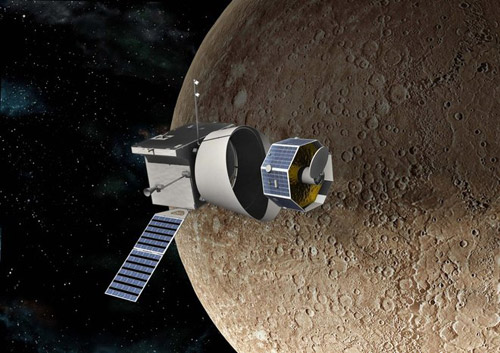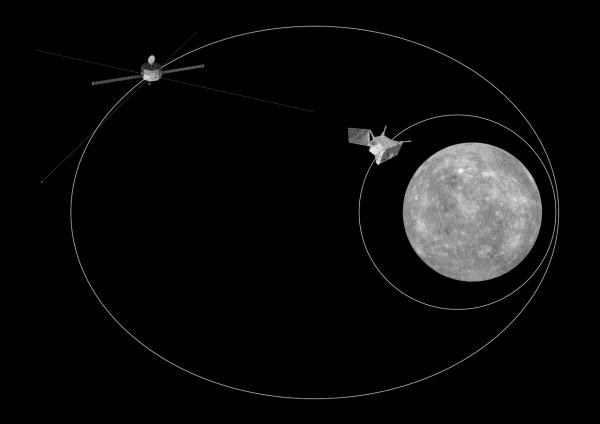BepiColombo

Figure 1. Artist's depiction of the BepiColombo mission, with the Mercury Planetary Orbiter (left) and Mercury Magnetospheric Orbiter (right).

Figure 2. BepiColombo spacecraft in orbit around Mercury. Credit: ESA/ATG medialab.
BepiColombo is a joint European Space Agency (ESA) and Japanese Space Agency (JAXA) mission to explore Mercury that consists of two orbiters: a planetary orbiter with a mass of 450 kilograms and a magnetospheric orbiter, with a mass of about 30 kilogams. An originally-planned lander that was also to have formed part of the mission was cancelled in 2003 due to budget constraints.
BepiColombo was launched on 20 October 2018 and is schduled to arriv eat Mercury, after several gravity assists, on 5 December 2025. It is named after Giuseppe Colombo, of the University of Padua, who first suggested how Mariner 10 (the first probe to fly past Mercury) could be placed in an orbit that would bring it back repeatedly to the innermost planet.
The two orbiters
ESA produced the Mercury Planetary Orbiter (MPO), which is equipped with 11 scientific instruments. Flying in a polar orbit, it will study Mercury for at least a year, imaging the planet's surface, generating height profiles, and collecting data on Mercury's composition and extremely thin atmosphere.
JAXA is responsible for the Mercury Magnetospheric Orbiter (MMO), which will explore the planet's magnetic field with its five on-board instruments.


